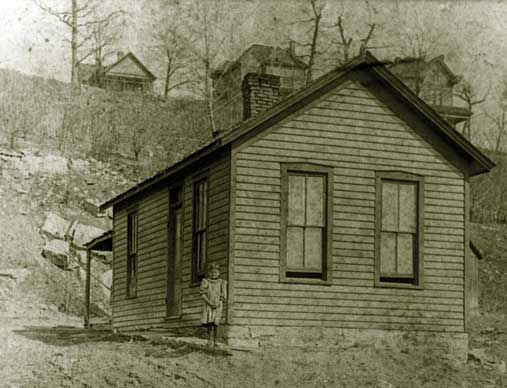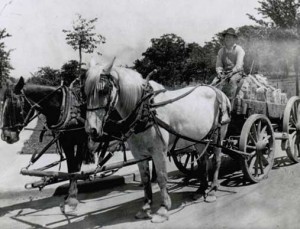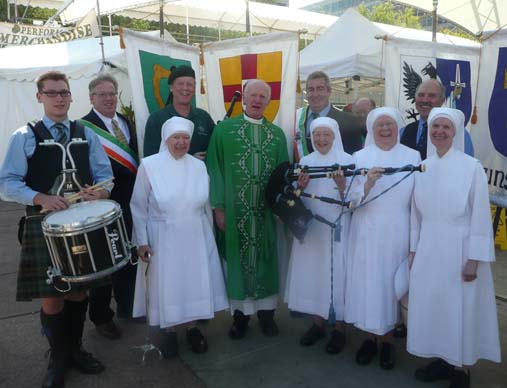
Posted by Joe Lambe
The Irish played a large part in the history of Kansas City and Midtown, and it’s time for a nod to Celtic culture and a wee bit of remembrance.
The Kansas City Irish Fest begins Friday and runs through Sunday at Crown Center. Many Midtown residents, former residents and their descendents will likely attend. After all, Kelly’s venerable bar is still in Westport and Browne’s Irish Marketplace, called the oldest Irish business in North America, is at 33rd and Pennsylvania. That was the southern edge of the city when the store opened there in 1901.
It was also close to what had been “Vinegar Gulch,” an Irish “Kerry Patch” neighborhood that swells considered a black eye on the face of the city’s allure. In the 1890s, about 300 small homes and a few ramshackle businesses lined Penn Valley, climbed its cliffs and surrounded a spring at what is now about 30th and Broadway streets.

Pat O’Neill, Westport business owner and Fest promoter, describes the Gulch in his book, “From the Bottom Up: the Story of the Irish in Kansas City.” No city water there, no gas service, no paved streets, few sidewalks, and much mud. Residents climbed through muck to fill buckets with water that spilled from a pipe into a wooden tank. The Parks Department reported then of the scene: “A goat would have had a hard time trying to pick his way along the side of the old Penn Street Ravine.”
In 1895, O’Neill wrote, City Beautiful proponents launched a plan to wipe out the embarrassing shanties and create a park. Scrap dealers and house movers paid $33,500 for the buildings, and some houses were moved a few blocks south to a new Kerry Patch between 31st and 33rd streets, Pennsylvania Avenue and Summit Street.
Many of the moved houses were later demolished to create the campus of Penn Valley Community College. Vinegar Gulch is now the scenic park ravine that can be seen while driving on Penn Valley Parkway.
As the City Beautiful movement continued, the Irish, Italian, Slavs and others continued moving south from the west bottoms and old river wards. In 1912, the Redemptorist Church opened at 33rd and Broadway, providing more support to the many new Irish families and others.
Much of the limestone for the church, for houses in the then new Valentine neighborhood and for other churches and neighborhoods came from Roanoke Park, provided by an Irish family business.
The churches, schools, union halls, taverns and undertakers of Midtown were once thick with Irish-Americans, O’Neill said. “Young immigrants coming to join their previously arrived brothers, sisters, aunts, uncles and cousins were met at Union Station, greeted with a red American apple, then taken up the hills to the south, to their new homes in Midtown.”
The annual Irish Fest – a merger of two smaller fests in Westport and Brookside – began in 2003 in the driving rain at Berkley Riverfront Park and drew 8,000 people. At Crown Center last year, it drew 97,000. This year the Fest will feature more than 300 musicians, dancers and performers. Promoters say it will draw Irish-Americans from the Midwest to as far away as Ireland.

Comments
One response to “As Irish Fest approaches, a look back at Midtown’s Irish heritage”
[…] Related stories: Midtown’s Irish history […]